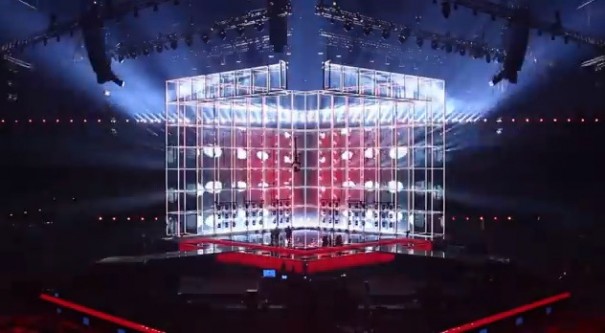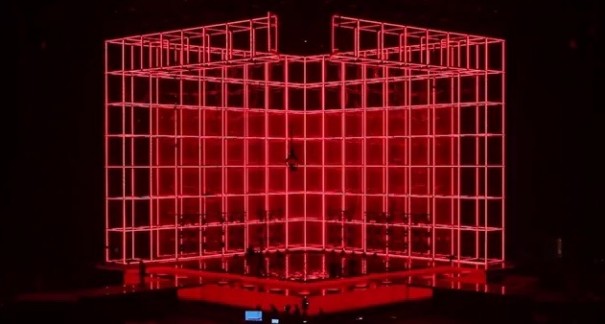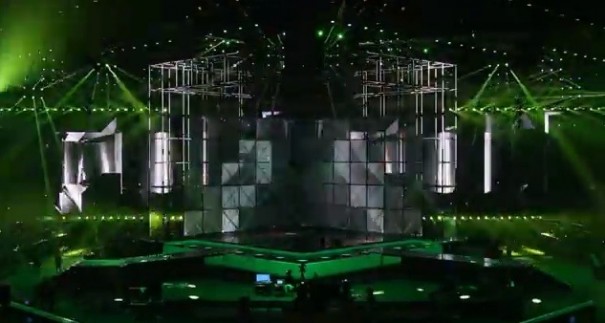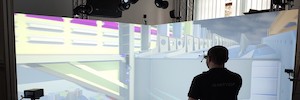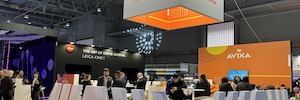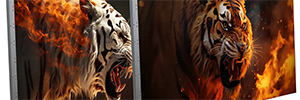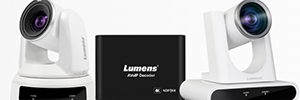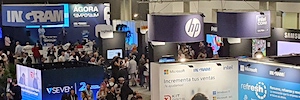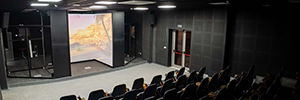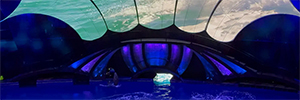Dinamarca convierte el Festival de Eurovisión en uno de los más innovadores espectáculos audiovisuales del año
The 59 edición del Festival de Eurovisión, celebrado en el B&W Hallerne Arena, antiguos astilleros de la capital de Dinamarca, ha puesto en escena uno de los mayores espectáculos audiovisuales en la historia de este festival, donde los sistemas de proyección, la tecnología 3D, iluminación LED e impactantes efectos de luz, sonido y pirotecnia han sido los grandes protagonistas tecnológicos.
La última tecnología audiovisual al servicio del espectáculo, en este caso del Festival de Eurovisión 2014 celebrado el pasado 10 de mayo en Copenhague, no ha dejado indiferentes a espectadores, aficionados y asistentes a este evento musical europeo, cuyo escenario ha sido uno de los más innovadores en su historia.
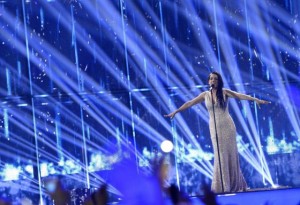 Los antiguos astilleros daneses, hoy convertidos en el B&W Hallerne Arena, se convirtieron en la noche del 10 de mayo en un despliegue tecnológico sin precedentes cuyo resultado ha sido un brillante espectáculo audiovisual, en el que la tecnología 3D configurada en un enorme cubo LED se configuraba en cada actuación de los concursantes, como ocurrió durante la actuación de la representante española, Ruth Lorenzo, con un efecto visual de la lluvia como elemento proyectado en el fondo del decorado y sobreimpresionado en la propia imagen en emisión fue impresionante.
Los antiguos astilleros daneses, hoy convertidos en el B&W Hallerne Arena, se convirtieron en la noche del 10 de mayo en un despliegue tecnológico sin precedentes cuyo resultado ha sido un brillante espectáculo audiovisual, en el que la tecnología 3D configurada en un enorme cubo LED se configuraba en cada actuación de los concursantes, como ocurrió durante la actuación de la representante española, Ruth Lorenzo, con un efecto visual de la lluvia como elemento proyectado en el fondo del decorado y sobreimpresionado en la propia imagen en emisión fue impresionante.
Desde el punto de vista de proyección, la organización del festival volvió a decantarse un año más por la tecnología de la firma belga Barco, jugando como ya ocurriera en la pasada edición un papel destacado el proyector HDQ-2K40, con un total de dieciséis unidades, que se combinaban con igual número de proyectores del modelo HDX-W20 para mostrar las imágenes más brillantes.
Tecnología LED
El escenario de Eurovisión 2014 centraba el espectáculo en un gran cubo de LED (de 20×35 metros), composed of 120 módulos con una superficie especial en LED para proyección, lo que permitía la visualización de imágenes o animaciones. Al igual que en la edición 2013, MediaTec fue la empresa encargada de la integración de la tecnología de Barco en esta configuración.
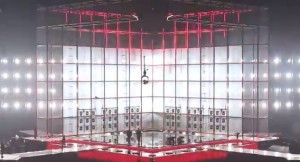 Diseñado por Claus Zier, el escenario tenía 20 metros de altura y 1.200 square meters, lo que le convierte en el mayor hasta la fecha construido en Dinamarca. Para el levantamiento de la estructura, que recordaba a los antiguos astilleros, se emplearon 40 toneladas de acero forradas de 3.000 luces fluorescentes, 730 de LED, así como una pantalla de policarbonato acrílico para la proyección de las imágenes en cada una de las actuaciones. Es de destacar que el suelo era sensible al tacto, por lo que las imágenes procedentes de los proyectores Barco podían interactuar con los artistas conforme caminaban por él.
Diseñado por Claus Zier, el escenario tenía 20 metros de altura y 1.200 square meters, lo que le convierte en el mayor hasta la fecha construido en Dinamarca. Para el levantamiento de la estructura, que recordaba a los antiguos astilleros, se emplearon 40 toneladas de acero forradas de 3.000 luces fluorescentes, 730 de LED, así como una pantalla de policarbonato acrílico para la proyección de las imágenes en cada una de las actuaciones. Es de destacar que el suelo era sensible al tacto, por lo que las imágenes procedentes de los proyectores Barco podían interactuar con los artistas conforme caminaban por él.
En cuanto al audio, en el B&W Hallerne Arena, un sistema de PA de más de 11.400 kilos junto a 150 globos gigantes diseñados con 60.000 metros cuadrados de tela permitieron contar con un sonido nítido y de alta calidad en todo el recinto, con un eco de apenas tres segundos. En el transcurso de la gala se utilizaron veintidós cámaras.
You liked this article?
Subscribe to our Feed And you won't miss a thing.
• Section: Audio, Case Studies, Digital signage, Display, Events, Production, Projection



